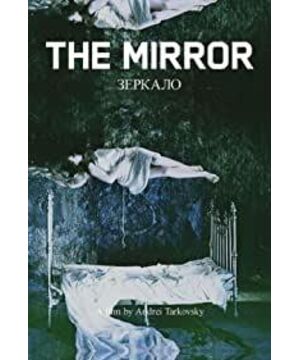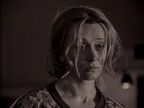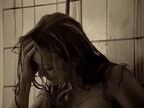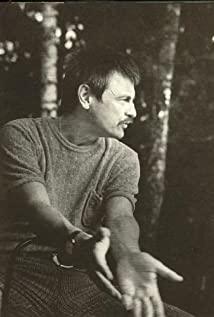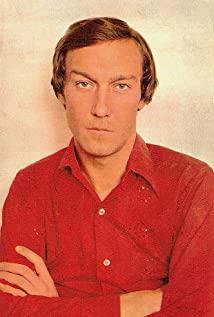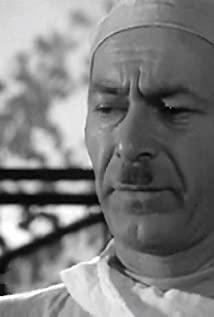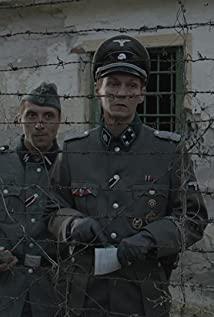(reproduced to indicate the source)
Introduction:
It is not difficult to understand the film "Mirror", the key is to firmly grasp a statement of the director Tarkovsky himself about the film: "If two people can experience the same thing, even if only once, they can also Get to know each other." In this film, the "two people" are the protagonist Alyosha and his mother Maria, "experience the same thing", which refers to looking in the mirror and examining oneself. In the end, the two reached a spiritual reconciliation. The film tells the spiritual journey of two people (mother and son). Most of this trip is told from the perspective of Alyosha, and a small part is narrated from the perspective of the mother (memories in the printing house). The last part of selling jewelry can be understood as the spirit of the mother and son almost resonating. Memories shared by the two. It can be said that there is no real protagonist in this film. The real protagonist is metaphysical, the spirit and memory itself.
The image of the protagonist Alyosha (middle-aged) has never appeared in the film, and the protagonist (juvenile) and the protagonist's son are played by the same person. The protagonist's wife and mother (youth) are played by the same person. The reason is that the protagonist projects his teenage self onto his son, and the wife also plays the role of a mother's substitute in the protagonist's psychological level.
It should be pointed out that although "Mirror" uses the expression technique of stream of consciousness in many places, interspersed with reality, memories and dreams, it can be said that the screen of Freud's theory is now on the screen, but the film tells a closed and complete story. , the logic is clear, and every detail has a clear source. Someone wrote in the comments: "This film doesn't need to be understood, just feel it with your heart", which can be described as ignorant and arty.
The short film about stuttering has two interpretations: First, it symbolizes that Alyosha has been in a state of aphasia in her life, and her inner wounds cannot be healed. She is like a stuttering patient, closing herself in. 2. The name of the stuttering patient is "Yuri", which is actually the first two characters of "Yurievitz", the family of Alyosha's grandfather. Apparently, the director likened Grandpa's house to a stutterer. Now, the stutterer is about to speak. The person who turned on the TV was Alyosha's son. Alyosha hoped that her son could witness her own self-examination, and also hoped that the next generation of young people could look back on life, history, and the future through this film.
text:
Alyosha has been suffering from a sore throat recently. One day he had a dream. The content of the dream is as follows:
1. [Dream] Alyosha's Dream
In 1935, my mother was sitting on the fence, and a doctor came from a distance. This scene combines two major events in Alyosha's memory: the burning of the barn and the departure of her father. Many people don't know who this doctor is. In fact, this doctor is a substitute for the father that Alyosha created in her dream. His father left him in 1935, so in a dream, also in 1935, a doctor came back from the corner where his father left. He and his mother hit it off and talked very much, all of which met Alyosha's psychological needs. Why is this person a doctor in the dream? Because doctors can cure diseases, Alyosha subconsciously yearns to heal the trauma of her father's death, as well as the trauma of her family.
The doctor said for no reason that he had no "key". This "key" is not only the key to open the door of the dream, but also the key to open the journey of memory, and the key to unlock the knot. At this time, a poem written by the director's father (the collection of poems fell in the distance) was read next to it, and the verse happened to be a mapping of the content of the film. "You and I"—the protagonist and mother; "you took me through the damp lilac bushes to the other side of the mirror, your domain. You held the crystal ball in your hands and slept in the throne.—"Crystal Ball "It's the carrier of the mirror." Fate is following in our footsteps, wielding a razor like a madman. "revealed how cruel Alyosha's recollection was." My throat suddenly filled with new strength. "Depicting the hero's determination to express himself also corresponds to the cure of the stutterer.
In fact, 1935 was the dividing line for Alyosha's attitude towards her mother. Before 1935, the mother-son relationship was harmonious. After the father left home in 1935, the mother and son had a estrangement. When the barn caught fire, Alyosha and her sister were sitting at a table with spilled milk, half a loaf of bread, and a candlestick. These three images are the last three things in Alyosha's fond memories of her childhood. Bread and candlesticks recur in Alyosha's dreams. The scene where the father washes the mother's hair, I believe many people will find it strange and terrifying. The mother's long hair hanging down covers her face, dancing with her hands, like a female ghost. This terrifying image reflects the change in Alyosha's impression of her mother after 1935. Then the water fell in the house, and the ceiling and wall skin fell down along the water. This water is actually the water my mother used to wash her hair. The concatenation of these two sets of dream images can be explained as: the mother's transformation led to the collapse of the family. Afterwards, the mother faces the mirror, and the mother in the mirror is an elderly person, which not only reflects Alyosha's desire for her mother to examine herself, but also shows her true appearance.
At this point, the first dream is over. Alyosha woke up from her sleep, and this strange dream kept him asleep until six o'clock the next evening. After waking up, Alyosha called her mother, told her the content of her dream, and inquired about the time of her father's departure and the fire in the barn - 1935. The mother informed Alyosha that her colleague and best friend Lisa had died. After that, just because she couldn't figure out whether it was 6 am or 6 pm, Alyosha couldn't help but ask her mother again: Why are we always at odds? This question, with the emotions in the previous dream, also explained to the audience the estrangement between mother and son for many years. The child's question made the mother angry, and the mother hung up the phone and began to recall a time when she was young with Lisa.
2. [Memories] Mother's Memories
Lisa's death reminds her mother Maria (Martha) of one of the most impressive things about Lisa. That is, on a cloudy and rainy day, Martha hysterically thought Stalin's name was misprinted. She returned to the newspaper printing factory in a panic, and after checking, she found that there was no mistake. But this incident triggered Lisa's accusations against her. She said that Masha was like Lebiakina, a captain's sister, who only knew how to call others and never admitted her fault. At the time of Lisa's death, after an argument with her son, Martha recalled what Lisa said and wondered if she was right or wrong.
That day, after leaving Lisa, she went to the bathroom to take a shower, but somehow there was no water. It is worth mentioning here that Lisa called Martha twice from the bathroom door and turned back to the office. She tap danced on the way back, apparently a reconstruction of reality from Martha's memory. In reality, Martha was in the bathroom at the time, and it was impossible to see Lisa in the hallway. The tap dance action is Martha's subjective belief that Lisa is gloating after taunting herself.
This memory ends with a verse from the director's father, but Lisa read the verse: "I am halfway through the journey of my life, and I am lost in the dark forest." This is also the best summary of my mother's middle age.
3. [Reality] Wife, son, Spanish friend
Alyosha divorced his wife, Natalia, and their son, Ignat. Although divorced, the two still often bring their children together and invite friends over to their home. Among this group of friends, a Spanish man left his hometown and came to Russia at a young age. He has a strong sense of national pride. He is keen to imitate the Spanish bullfighter. He slapped his daughter because her Spanish dance was not up to standard, all because of him I don't know if I can return to my homeland in this life and take a look at my father. Luisa, the Spanish woman who married a Russian and has a Russian child, took root here. In their twilight years, it is difficult for them to return to their homeland in this life. The sad situation of the two characters is interspersed with real video materials of the Spanish Civil War.
The significance of this part of the Spanish Civil War is as follows: First, Alyosha's father left home in 1935 and went to the front line of the Spanish Civil War as a member of the international column. Second, the film was shot in 1975, the year Franco ended his dictatorship. It carries the director's political metaphor: a civil war in another country, resulting in two countries, two generations uprooted, and affecting many people's lives.
4. [Surreal] Pushkin's Letter
I think this is the hardest part of the film. 3, 4, and 5 can be understood as: the director temporarily put aside the story of Alyosha and his mother, and then turned to a war in human history, a side view; the role and status of Russia in the history of human civilization. ; An examination of the impact of art and culture on society. They are both the director's private goods and an extension of the theme of mirrors.
At home, a woman suddenly appeared in an empty room, and it was verified that her image was the famous Russian poetess Akhmadova. She asked Ignat to read one of Pushkin's letters. Ignat opened his notebook but misread a passage of Rousseau: "Science and art have no influence on morality." Pushkin's letter was addressed to another highly controversial Russian writer, Chadayev. Chadayev is an "extreme left" in today's terms. He denied everything about Russia at that time, including politics, economy and culture. The previous quotation of Rousseau's words is also the quotation from Chadayev when he expressed his own views. Pushkin stated the special position of Russia in the geographical and historical dimensions: far away from the European continent, different from the religious culture in other parts of Europe. He does not agree with Chadayev's point of view. Obviously, Pushkin believes that a group of great writers, musicians and artists in Russian history represented by him have made outstanding contributions to human history. The director, borrowing the past to describe the present, considers himself one of these artists (historical proof he is). When Ignat was reading the letter, a picture of another Russian poetess, Tsvetaeva, hung on the wall behind him. Director Tarkovsky was a poet himself, as was his father. Apparently Akhmadova and Tsvetaeva are the director's two idols. The director tried to mix his idol into the plot of the movie, taught the protagonist's son by precept and example, and recognized the contributions made by Russian artists throughout the ages to human history and society. Ignat's identity in this scene is not only Aliao Sha's son, he represents the next generation of the Soviet Union.
At this time, Alyosha's mother (the elderly) knocked on the door, but said that she had entered the wrong door. Ignat turned around, and Ahmadova disappeared. The scene is very experimental, breaking the fourth wall. The mother visited her son's house, but it happened that the director's idol was invading, so the mother said with interest: "I went wrong." The implication: Sorry, I know this is not part of the story in the movie. (A good example is that she didn't know her grandson.) Fourteen years ago, Resnais made Last Year at Marienbad (1961), which demonstrated an unprecedented logic of time and space. It is impossible to say that Tarkovsky was not influenced by the French New Wave. Breaking the boundaries of time and space in some passages of the film and establishing unusual time and space logic and narrative logic were the trends of that era. The indiscriminate entry of director idols is the first level of crossover. And Pushkin's letter, which has nothing to do with Alyosha, is what the director wants to say to the audience through Ignat. This is the second level cross. Next, let the old mother pull the audience back to the original narrative logic through the action of knocking on the door, which is the third layer of crossover.
The disappearance of Akhmadova is accompanied by a thrilling soundtrack, indicating that the director will close this wormhole of time and space, and the film will return to the normal narrative logic. Ignat picks up the phone from his father, Alyosha, which leads to Alyosha's first love.
5. [Memories] Alyosha's Memories
Alyosha recalls her military training when she was 7-8 years old. The background of the times is World War II, the German invasion of the Soviet Union. In the training camp, he fell in love at first sight with a girl who was ambiguous with his instructor, and secretly fell in love with her. This girl was the embodiment of an angel in Alyosha's life. Alyosha also remembered that there was a stubborn teenager in the training camp whose parents died in the siege of Leningrad. He always understood the password to turn backward as a 360-degree circle in place. This action has a symbolic meaning, which can be understood as not daring to look back, not daring to face the experience of oneself and the motherland; it can also be understood as human beings always turning in circles in the process of civilization. From World War I to World War II, the same mistakes were repeated over and over again. The stern instructor is a kind person in a critical moment. The ignorant child dropped a grenade in the crowd, and his first reaction was to jump on it. The director narrated several small events in the training camp, and described the combat level of the Soviet Union when the country was in danger: the veterans were strict and kind-hearted; the recruits had poor combat ability, and even seven or eight-year-old children had to be trained as soldiers, and the children shot off target. , I don't know the shooting position, and I don't even know the basic knowledge of rifle accessories. The flashback part of the military training ends with a close-up of the girl with a crush. The girl's lips were cracked and blood clotted. A girl's lips are a symbol of love, and wounds represent hurt. Love and hurt is the director's summary of the Great Patriotic War of the Soviet Union. Then the film is interspersed with video materials: Hitler's death, nuclear explosion, Zhenbao Island incident, etc. It summarizes the major historical events that have occurred since World War II.
6. [Reality] Color and black and white
The colored part is the return of Alyosha's father from the battlefield. My mother greeted my father with a numb attitude because he was serving abroad all the year round and did not fulfill his responsibilities to the family. They divorced shortly after. The black and white part is Alyosha and his wife fighting for custody of Ignat. The comparison of these two parts before and after reflects a sense of fate. Parents make mistakes, children grow up and continue to make the same mistakes. Does it remind you of the boy who keeps spinning around in 360-degree circles in training camp? The sense of fate of Alyosha's family and the director's expression of the fate of war form a nest, and see the big from the small.
The quarrel between Alyosha and his wife has three main contents, one is the upbringing and education of Natalia, and the other is that Alyosha did not know that her mother was seriously ill after Lisa's death. The third is to cite the holy scriptures. In the Bible, God burned a bush before Moses and appeared to him. The thorns burn but are not burnt. This is a miracle, which can be simply understood as a sign that God has come to earth. Corresponding to Ignat burning the branches outside the window, it happened that the branches were not completely burned, and they were as straight as the burning thorns in the Bible. This scene forms an intertextuality with the biblical story. The director expresses: We pray to God, where is God? Finally, Alyosha tells about a dream she often has, thus entering the core content of the film.
7. [Dream] A dream repeated by Alyosha
The next scene is the house of Grandpa Alyosha. The colored parts are memories of childhood and real scenes. In reality, the family is happy in the house. The black and white part is the dream Alyosha recounted over and over again: in the dream, Alyosha was wandering outside her grandfather's house, and there was always something preventing him from going in. Open the door, and inside the house is the mother peeling potatoes. Remember the following imagery in the dream: dining table, half a loaf of bread, candlesticks, chickens breaking windows, potatoes, rain and wind.
This dream can be explained as: Grandpa's house carries Alyosha's innocent childhood, and it is also a happy time for the family. He wanted to go back, but he could never go back there. The dining table, half a loaf of bread, candlesticks and other props related to the last good memories of childhood were put outside the house in the dream, obviously the house was occupied by something bad. It was the chicken who occupied the house, and the mother who was peeling potatoes. Why is the mother who is chicken and potato peeling the obstacle preventing him from entering grandpa's house? watch 8
8. [Memories] The root of everything
This root includes the root cause of Alyosha's discord with her mother, the root cause of Alyosha's inability to enter her grandfather's house in her dream, and the root cause of Alyosha's change in life attitude. Everything happened on this rainy day. My mother took Alyosha to the house of my father's friend to avoid the bombing of Moscow. There was only one woman (the wife of my father's friend) at home. Because of the war, the life of the mother and son was impoverished, and they did not even have decent shoes. The mother had no choice but to try to sell her family jewelry to this woman in exchange for some living expenses. Pay attention to the rainy weather, which is exaggerated in the dream into gusts of strong wind and downpour from the eaves.
Alyosha looked at the woman's house. There were potatoes and spilled milk on the ground, and there was half a bottle of milk left on the table. Originally, the spilled milk was when the barn was on fire - what Alyosha saw - and the bread and the candlestick together represented a beautiful image. Just because of the spilled milk seen in the woman's house, milk is no longer a symbol of good memories. So in Alyosha's dream, the spilled milk was removed from the table, and only bread and candlesticks were left. The potatoes on the ground became the potatoes that the mother peeled in the house in the dream. Alyosha stared at the round mirror hanging on the wall. He was staring at himself who was recalling this scene many years later.
At this time, the girl whom he had a crush on appeared. She is the incarnation of an angel who guides Alyosha to find the wounds of her soul. This scene corresponds to the previous episode of Ignat burning branches. At that time, the couple had a negative attitude and questioned God. Alyosha asked his wife, "For whom did the burning bush appear for? Which angel?" In fact, the burning bush in the Bible was for Moses. Alyosha apparently misremembered Moses as an angel, so at this moment, what appeared in his memory was not Moses, but the angel in his heart: the girl he had a crush on. The girl burned her finger, and the finger was fine. This is exactly the allusion to the burning thorns in the Bible, the thorns are not burned no matter how they burn. The thorns are a metaphor for human beings, who have been purified by the fire of God, but will not perish. The girl you have a crush on is the embodiment of an angel and a witness to a miracle. It needs to be pointed out that the burning finger of the girl with a crush is a visual manifestation of Alyosha's self-struggle in her memories, not reality. In reality, he doesn't know the girl at all.
The woman took her mother and daughter to see her little son. The cute baby was lying in the cradle. The mother and son felt uncomfortable seeing this scene. The son was full of envy and nostalgia, and the mother felt disgusted. Obviously, the trauma of war and family makes mothers always feel more grief than love for their newborns. How lovely they used to be, but when they grew up they were completely different. The woman invited the two to stay for dinner and asked her mother to help her kill a chicken. The chicken that Alyosha had dreamed out of the broken window of the house came from here. Killing the chicken is a blackening ritual for the mother. She looked at her husband in the memory with evil eyes. The child in the woman's cradle reminded her of her happiness when she was pregnant, and the contrast between this happiness and this moment made her ruthlessly kill the chicken in her hand. This scene was also watched by Alyosha, who observed the evil eyes of his mother. Everything that happened in this house has left an indelible mark on the hearts of mother and son.
Now we know the source of the trauma in the mother and son's heart. For mothers, it is to cut off the love for the past, including the love for the husband, and the love for the children. For the son, it is the fear and hatred of the mother, the fear of the blackening of the mother, the fear of her eyes, and the hatred of everything in that house: potatoes, milk, chickens.
9 [Dream] Alyosha's dream has changed
After the wound was healed, Alyosha's dream naturally changed. In his repeated dream, he finally walked into his grandfather's house with a bottle of milk in his hand. The image of this bottle of milk comes from the home of a woman who buys jewelry. At that time Alyosha saw that only half of the milk was in the bottle, and the other half was spilled on the ground. What does the image of milk need to be understood here? Obviously, on behalf of milk, on behalf of maternal love. In the woman's house, there was only half a bottle of milk, and the other half was spilled on the ground; at this time, in the dream, the bottle was full of milk. The before and after comparison is self-explanatory. The director used the image of milk to express Alyosha's hatred for the lack of mother's love to her present relief.
10 [Surreal] Across Time and Space
The elderly mother and the young son are in the same frame, which is surreal. The mother's childhood love for her son, which she had cut off since she killed the chicken, is now back.
11 [Reality] The death of Alyosha
Alyosha had aggravated laryngitis and was on the verge of death, with only her sister by her side. When he was dying, he said that he only wanted happiness, and the release of sparrows symbolized that the soul was restored to freedom. Why was he able to find the source of the wound and forgive his mother through the guidance of the angel in his memories? Apparently, it is the death of a man, and he is fully enlightened.
12 [surreal] big reunion
The young mother and father were lying in the grass, discussing whether they wanted a boy or a girl. This was their original intention, their longing for a better life, and the starting point that they should return to after this spiritual journey. The camera pans, and the old mother walks away with her childhood son, crossing the time barrier, so that the mother and son can meet at the happiest age in their lives. A spiritual reconciliation was finally achieved between mother and son. The son returns to the good childhood, and the mother recalls the old maternal love in her twilight years. The young mother looked at her old self with emotion. The movie ends.
Author: Xiaotu (reproduced and indicated the source)
View more about Mirror reviews


